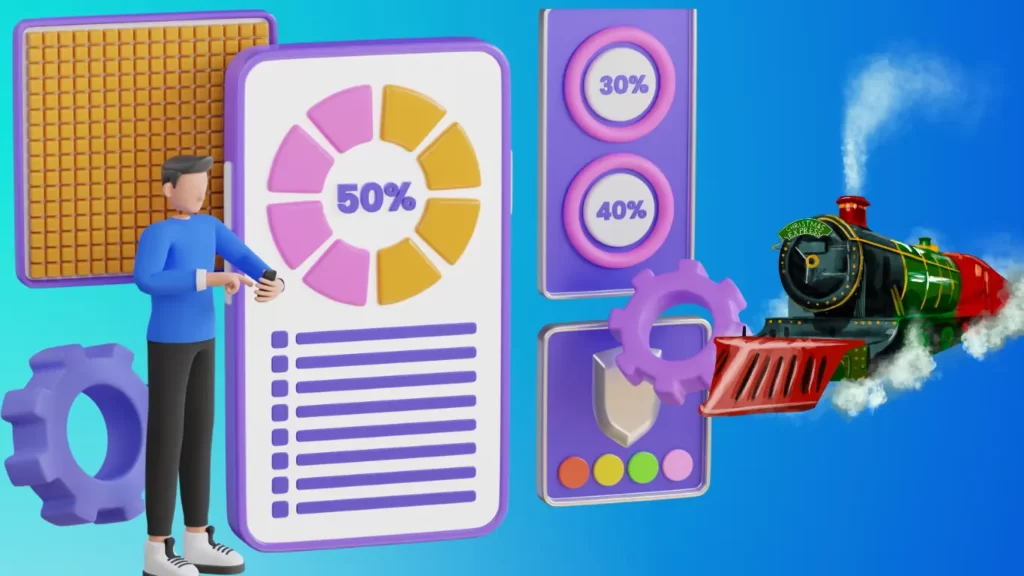Uses of Computer in Railway Station : In today’s fast-paced world, efficiency and innovation are the driving forces that shape various industries. Companies constantly seek ways to improve their operations, from manufacturing to transportation.

The railway industry is no exception. With the advent of technology, computers have become an integral part of railway operations, transforming the way trains are managed and controlled.
Uses of Computer at Railway Station | Use of Computer in Railway Station
1. Training and Skill Development
As computers become more prevalent in railway operations, it is essential to provide adequate training and skill development programs for railway personnel. This ensures that they are equipped with the necessary knowledge and expertise to operate and maintain the computerized systems effectively.
Training programs should cover various aspects of computerized railway operations, including system operation, troubleshooting, and data analysis. In addition to technical skills, personnel should also receive training on cybersecurity protocols to protect sensitive data and prevent unauthorized access.
To ensure continuous skill development, railway companies should invest in regular training programs and provide opportunities for employees to upgrade their skills. This can include workshops, seminars, and online courses that focus on the latest advancements in computer technology and their application in railway operations.
2. Potential risks and considerations in computerized railway operations
While computerized railway operations offer numerous benefits, some potential risks and considerations need to be taken into account. One of the main concerns is the risk of cyber-attacks. As computer systems become more interconnected, they become vulnerable to hacking and unauthorized access. This can lead to disruptions in train operations, compromised safety, and potential loss of sensitive data.
To mitigate these risks, railway companies should invest in robust cybersecurity measures. This includes regular system updates, strong password protocols, encryption of data, and regular vulnerability assessments. Additionally, personnel should receive training on cybersecurity awareness to identify and report any suspicious activities.
Another consideration is the cost of implementing and maintaining computerized systems. While the initial investment may be high, the long-term benefits in terms of efficiency and improved operations outweigh the costs.
3. Computerized signaling and train control systems
Computerized signaling and train control systems have revolutionized the way trains are managed and controlled. Traditionally, signaling systems relied on manual processes, which were prone to human error and delays. With computerized systems, trains can be monitored and controlled in real-time, ensuring safe and efficient operations.
Computerized signaling systems use advanced sensors and algorithms to detect the presence of trains, monitor their speed, and manage their movement along the tracks. This allows for precise control and coordination, minimizing the risk of collisions and delays.
In addition to improving safety, computerized train control systems also optimize train movements, reducing energy consumption and minimizing wear and tear on the tracks and rolling stock.
4. Computer-aided dispatch and scheduling systems
Computer-aided dispatch and scheduling systems play a crucial role in optimizing train operations and minimizing delays. These systems provide real-time information about train locations, schedules, and potential disruptions, allowing for efficient resource allocation and decision-making.
By automating the dispatch process, computer-aided systems enable quick response to incidents and emergencies, minimizing the impact on train operations. They also facilitate effective communication between train operators, station staff, and maintenance crews, ensuring smooth coordination and problem-solving.
Scheduling systems use algorithms and historical data to optimize train timetables, taking into account factors such as passenger demand, track availability, and maintenance requirements. This results in better utilization of resources, reduced waiting times, and improved passenger experience.
5. Computerized maintenance management systems
Computerized maintenance management systems (CMMS) have transformed the way maintenance activities are planned, executed, and monitored in railway operations. These systems automate the maintenance process, ensuring timely inspections, repairs, and replacements of critical components.

CMMS uses real-time data from sensors and monitoring devices to track the condition of trains and infrastructure. This allows for predictive maintenance, where potential issues are identified before they cause disruptions or failures. By addressing maintenance needs proactively, railway companies can minimize downtime, extend the lifespan of assets, and reduce overall maintenance costs.
Conclusion: Uses of Computer in Railway Station
The integration of computers in railway operations has revolutionized the industry, driving efficiency and innovation at the station. From computerized signaling and train control systems to dispatch and scheduling systems, computers have streamlined processes, minimized delays, and enhanced passenger experience.
While there are risks and considerations in implementing computerized systems, careful planning, training, and cybersecurity measures can mitigate these challenges. By investing in the necessary infrastructure and providing comprehensive training programs, railway companies can maximize the benefits of computer technology and propel the industry forward.
- Realism in Computer Graphics | 5 Techniques for Enhancing Realism in Digital Media
- Tools and Software for Creating Computer Graphics | Career Opportunities in Computer Graphics
- TOP 6 Use of Computer graphics | Applications of Computer graphics
- 9 Essential Uses of Computers in Hospitals
- TOP 5 Advantages of Internet Banking